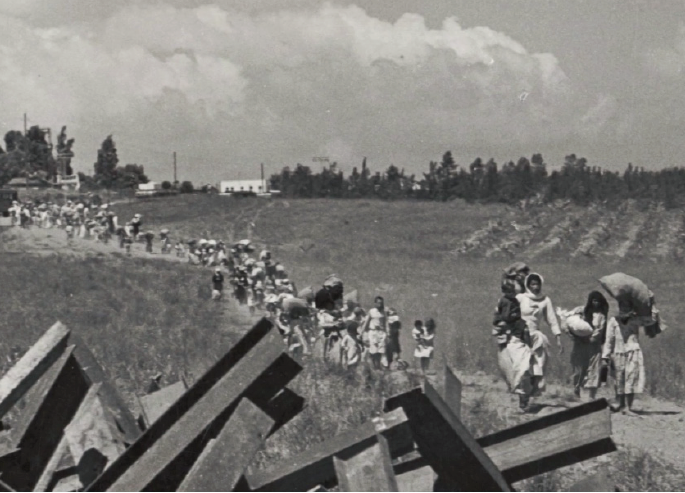By Mariam Ismail
Follow @mariam_ismail1
The feature length documentary 1948: Creation and Catastrophe, directed by Ahlam Muhtaseb and Andy Trimlett, recounts the mass expulsion of Palestinians in 1948 and, given the latest Israeli killing of at least 30 Palestinian protesters along the Gaza Strip border last week, is a timely reminder of the Arab-Israeli crisis.
Screened in P013 as part of the Spring 2018 Social Justice Film Festival on 21 March, the documentary revisits the Nakba (The Catastrophe), through the personal recollections of the people who lived through it.
The interviewees, from Palestine and Israel, offer different viewpoints but all tell a vivid and heart-wrenching tale of the mass evacuation of Palestinians from their homeland.
The documentary contradicts the common misconception that Palestinians “sold their land” to the Jews.
Instead, it relays the events in chronological order, starting with the massacre of Deir Yassin, which killed hundreds of Palestinians, to the Israeli Declaration of Independence in 1948.
Some Palestinians left their country out of fear of being massacred; some were thrown out of their homes at gunpoint; others still were rounded up in vans and dropped at the border; many were killed just for walking in the streets.
Both Palestinian refugees and Israeli veterans interviewed in the film came to a consensus that the Zionist movement to create an all Jewish state involved inhumane bloodshed, the killing of innocents and drastic orders of expulsion.
“It was very ugly. After this I did not know if I was a Zionist.”
“Until then the war was dangerous, but it was not ugly. It was the first time I saw it as ugly.”
These were among the statements that male and female Israeli veterans gave as they recalled what they did in the war.
A historian in the film described the Nakba as “a realization of a dream and a destruction of a society;” another called it “ethnic cleansing;” and almost everyone referred to it as a “tragedy.”
However, the documentary found a way to remain unbiased throughout. The number of Palestinian interviews was paralleled by the number of Israeli interviews.
For every leftist historian, there was a rightist one, and the narration itself was void of emotion, which Muhtaseb calls a “very deliberate choice.”
This is one of the main aspects of the documentary that makes it stand out from others produced about the war; Israelis confirm what has for so long been taken out of history books: Palestinians existed and were forcibly thrown out.
These stories were mostly accompanied by archival footage. Black and white photographs and videos flashed across the screen as interviewees recalled some memories.
The documentary acted as a time machine, transporting the audience to pre-1948 Palestine while voiceovers translated the footage into the story of a dynamic an ongoing crisis; a creation of a link between past and present.
The present takes center-stage towards the end, where facts are intertwined with emotional stories to create a multi-perspective visual of the Palestinian reality today.
The story of a Palestinian man who received the American passport and was finally able to travel back to his country as a “tourist,” only to find his previous home gone, was followed by facts on the Partition Plan, a 1947 plan to divide the land equally between Palestinians and Jews, and how it was never carried out.
“While I do feel sympathy for them, the truth is if we allow the Palestinians back into the country, it wouldn’t be a country I would want to live in anymore,” said one of the interviewed Israeli veterans dismissively, with nothing more than a shrug of his shoulders.
The documentary revealed that by 1949, 78 percent of Palestinian land was owned by Jews, whereas by 2018, almost the entire country has fallen under the control of the Israeli state.
